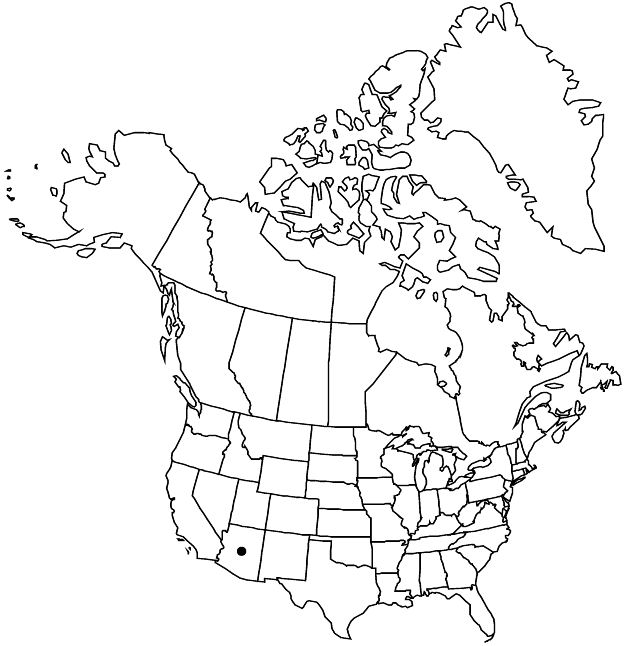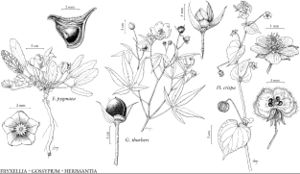Gossypium thurberi
Relaz. Cult. Coton., 120. 1877.
Plants 2 m, freely branching. Stems 5-angular when young, glabrate. Leaves: stipules linear, 5–10 mm; petiole quadrangular, 1/2–3/4 as long as blade; blade deeply 3–5-lobed, lobes narrowly lanceolate (4+ times as long as wide), 5–15 cm, membranous, base subcordate, apex long-acuminate, surfaces glabrate. Inflorescences: flowers sympodial. Pedicels 1–3 cm, with 3 prominent nectaries; involucellar bractlets persistent, ligulate, 0.8–1.2 cm, margins entire or apically few-toothed. Flowers: calyx 3 mm, apex truncate; petals cream, with red spot at base, sometimes spot absent, 1.5–2.5 cm; staminal column 9 mm, glabrous; style slightly exceeding androecium; stigmas 3–5. Capsules 3-locular, subglobose to oblong, 1–1.5 cm, punctate, externally glabrous, internally ciliate. Seeds 3–4 mm, glabrous or glabrate. 2n = 26.
Phenology: Flowering late summer.
Habitat: Open, arid habitats, rocky hillsides, banks of seasonal streams
Elevation: 800–2400 m
Distribution

Ariz., Mexico (Chihuahua, Sonora).
Discussion
Gossypium thurberi occurs in central to southern Arizona, from Yavapai to Cochise counties.
Selected References
None.
